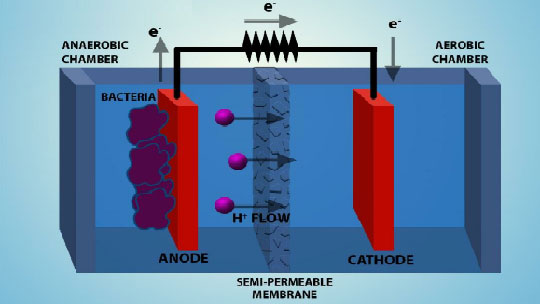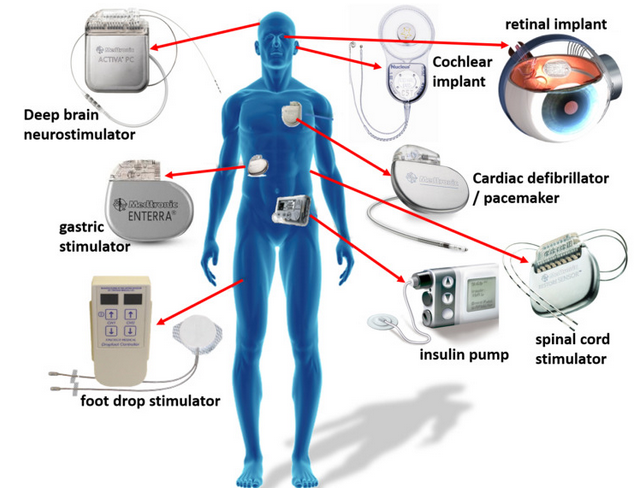
In recent years the use of energy is an important topic. Defectiveness in consumption of fossil fuels as an energy source induces searching to cleaner and more efficient fuels. One alternative source in energy is BFC. BFC is a subclass of fuel cell and a suitable contribution to facility the future of power generation. It has potential to convert the energy of biofuels to electrical energy by means of enzymes or microorganisms as a biocatalyst.
As a sustainable technology, biofuel cells (BFCs) have recently attracted significant interest owing to their unique ability to convert chemical energy stored in biodegradable substances directly into electricity. Enzymatic biofuel cells (EBFCs) and microbial fuel cells (MFCs) are two important parts of the BFC system, in which devices with renewable redox enzymes and/or microorganisms are used as the catalysts to perform natural oxidation processes at the anode, resulting in the release of electrons and the generation of an electrical current.
Microbial biofuel cells (MFCs)
MFCs were the first BFC technology which developed as replacement for the conventional fuel cell technology. MFCs convert the stored energy in the chemical bonds of organic materials to the electrical energy under catalytic reactions using microorganisms. Microbes have many advantages compared to enzymes which they can catalyze complete oxidation of biofuels and can be less sensitive to poisoning and loss of function in normal working environments.
Enzyme-based biofuel cells (EFCs)
In order to remove the MFC constrictions, the suitable redox enzymes isolated and purified from target organisms and used as biological catalysts. The specific enzymes can electrically contact with the electrodes of the BFC and generate electrical energy using oxidization the target fuels. EFCs generate higher current and power density for microelectronic and miniscale-electronic device applications.
Some properties of BFCs
The biocatalysts (enzymes or microorganisms) are clean and renewable and endow BFCs with the ability to operate under mild conditions (i.e., ambient temperature and neutral pH). Unlike the high-cost of the noble-metal catalysts, scaling up the use of these biocatalysts can reduce production costs. Furthermore, BFCs offer a clean energy alternative to fossil fuels in that they can use cheap, environmentally friendly, renewable fuels (e.g., sugars), wastewater, and even glucose endogenously existing in biological systems to produce electrical energy. All these unique characteristics make BFCs more attractive as an economical and portable energy alternative to batteries and conventional fuel cells. Therefore, BFCs have important potential for powering electronic devices in remote areas (e.g., sea-floors), removing organic pollutants from waste-water while producing electricity, and applications in implantable and non-invasive medical devices, self-powered sensors, etc.
Some applications of BFCs
The BFC technology will realize commercial applications in implantable medical devices, portable power batteries, wastewater treatment and etc. In addition, BFC shold the key to the vision for green energy production, which will lead to a clean environment in the very near future.
The biofuel cells operating internally or externally on a human body promise future various medical electronic implants powered by the biofuel cells and resulting in bionic human-machine hybrids. Aside from biomedical applications, one can foresee bioelectronic self-powered “cyborgs” based on various animals, which can operate autonomously using power from biological sources and used for environmental monitoring, homeland security and military applications. In all bioelectronic systems, regardless their applications and complexity, the power sources will be highly important and biofuel cell are promising devices for providing electrical power extracted from physiological resources.

Challenges and Prospects
The development of BFC technology requires significant improvement in the efficiency of biocatalysts immobilization on electrodes, so as to enable direct electron transfer and establish more efficient electrical communications with electrode surfaces. Currently, the main bottle-neck problems in BFCs are their short life-time and low-power density, which hamper the broad practical applications of BFCs. To address these issues, many efforts have been devoted to the fabrication of nanostructured materials with the purpose of facilitating electron transfer between enzymes/microbes and the electrodes and providing a suitable microenvironment for the natural catalytic processes of the enzymes/microbes. the investigation and development of new nanostructured materials with different dimensions, morphologies and composites have a high probability of providing feasible strategies to overcome the critical difficulties faced by the current BFC systems, such as slow electron transfer, low power density and short-term stability.Despite great progress that has been made in the past decade, the research on BFCs is still at an early stage and many issues are waiting to be tackled for practical applications.






